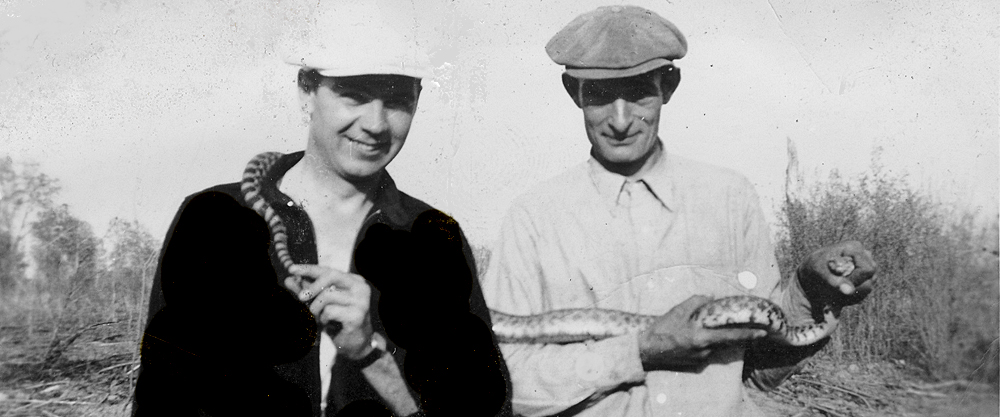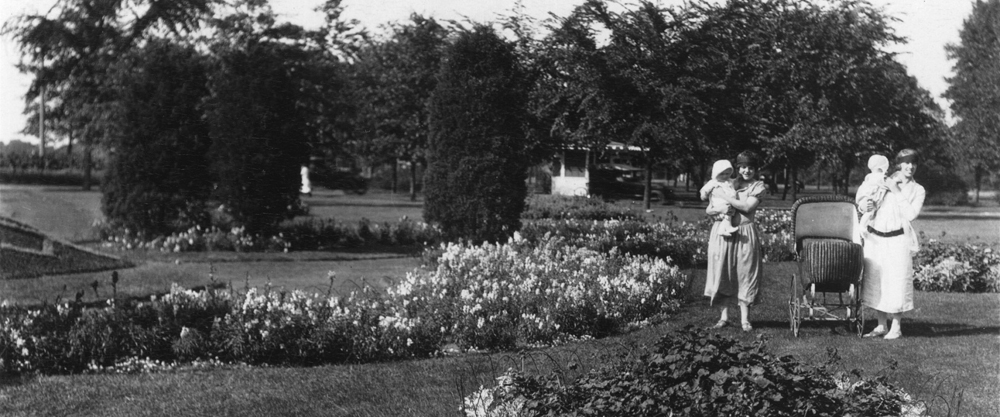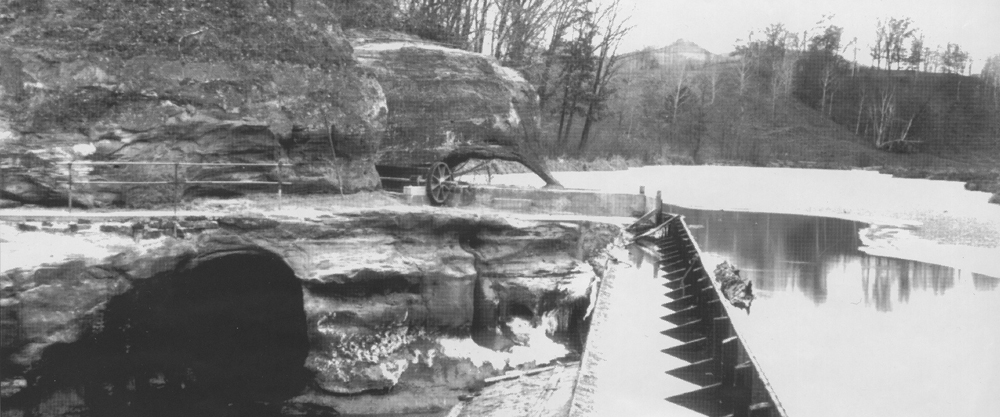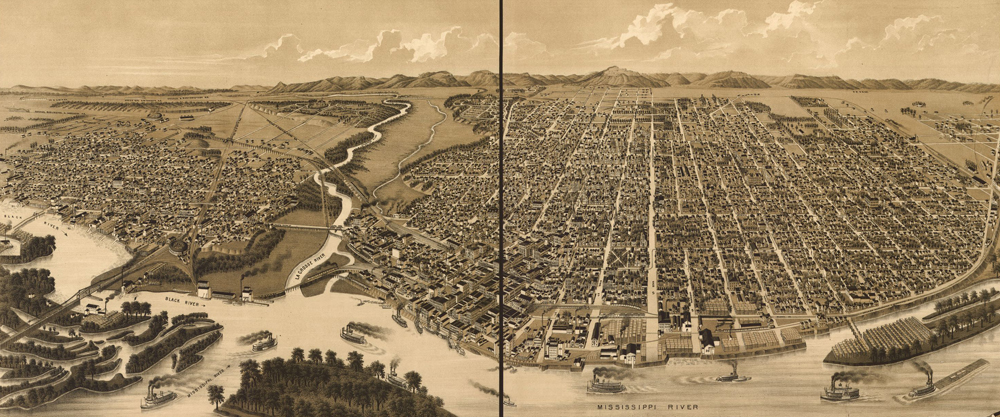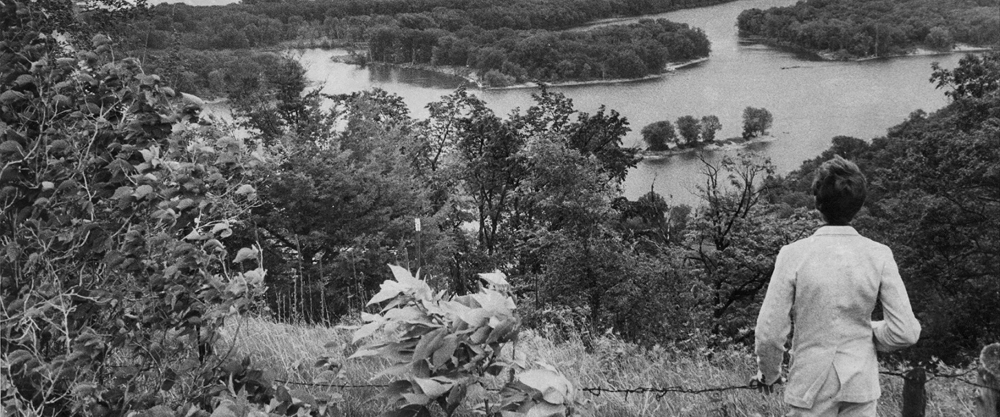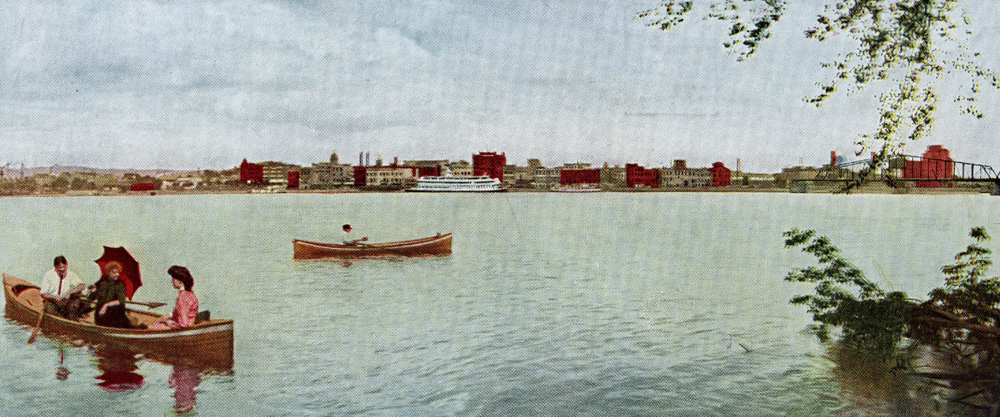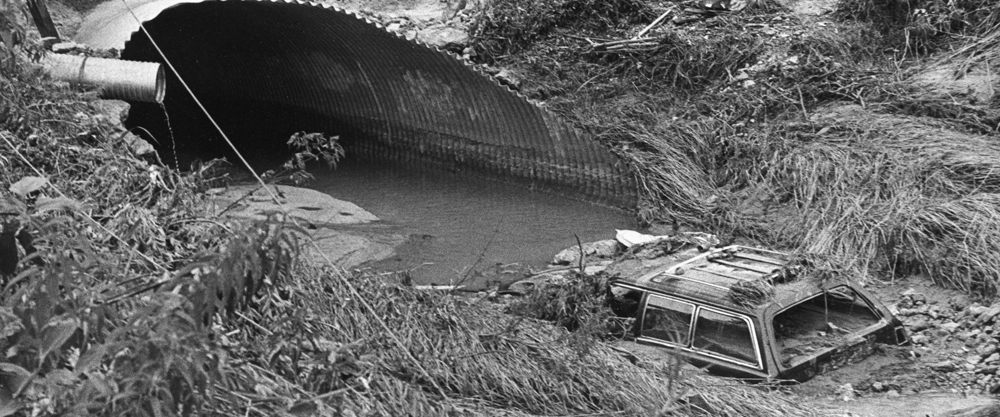LA CROSSE HISTORY
unbound
THE LA CROSSE AREA'S HISTORY, DIGITIZED
Other Rivers

Unbound Collections
- Browse All Titles
- Formats
- General Histories
- Area Genealogy
- Accidents & Disasters
- Agriculture
- Archaeology
- Architecture
- Arts & Music
- Businesses & Industries
- Cemeteries
- Economy
- Education & Schools
- Events & Festivals
- Government
- Health & Healthcare
- Historic Sites
- Literature
- Military & War
- Natural Environment
- Neighborhoods
- Organizations
- Parks
- Peoples & Cultures
- Politics
- Press & News Media
- Religious Groups
- Sports & Recreation
- Transportation
Resources
—Other Rivers—
Creator:
Olson, Harlan
Description:
This study of Pammel Creek, La Crosse County, Wisconsin, was initiated in order to quantitatively assess the degree, the type, and the specific sources of enteric pollution in the stream. Fecal coliforms and fecal streptococci were selected as the indicator organisms. Both types of bacteria are present consistently in the feces of all warm-blooded animals. Rainfall and the resulting storm water run-off probably contributed to the enteric pollution of Pammel Creek in two ways: by loading the stream with bacteria and nutrients, and by saturating the soil around septic system drainfields. Fecal coliform tests of July and August, 1971, revealed high levels of enteric pollution at all test stations. Only 3 of 58 samples yielded results which were under the suggested standard of 200 fecal coliforms per 100 ml for primary contact recreation. The fecal coliform - fecal streptococci ratios obtained in the test series of 1972 and 1973, indicated a probable injection point for human fecal contaminants in the vicinity of Station 12. Out of a total of 32 test samples from Station 12 and its subdivisions, 75% gave ratios which indicated enteric pollution which was predominantly of human origin. Ratios obtained at the other sampling sites suggested enteric pollution derived from warm-blooded animals other than man. In view of these-results, it is recommended: (1) that measures be taken to immediately correct defects in the septic sewage facilities in the vicinity of Station 12; (2) that priority be given to the extension of sewage lines connecting the municipal sewage system of the city of La Crosse with the residential areas in State Road Coulee and adjacent coulees; (3) that measures be taken to control run-off from concentrations of fecal contaminants on farms located on the Pammel Creek watershed; and (4) that thorough studies be made concerning the impact of any new development which affects the quality of water in Pammel Creek.
UW-L Master's Thesis
UW-L Master's Thesis
Author:
University of Wisconsin-La Crosse
Creator:
Carter, Laurie
Description:
The past few years, the increased prevalence of deformed frogs in the Wisconsin/
Minnesota area has caught the attention of scientists and environmentalists around the
country. The health of frogs, and other amphibians, in an environment can be used as an
indicator of the health of that environment. The objective of the project was to find out if
the Mississippi River Valley harbored deformed frogs, and if the number of cases identified
was unusually high. The project also looked to find out if Manodistomum syntomentera
might be one causative agent for frog deformities. Frog collections were made
at Goose Island County Park, (La Crosse Co), Van Loon Wildlife Area, (La Crosse Co),
and Trempealeau National Wildlife Refuge, (Trempealeau Co). No deformities were
identified in any of 12 green (Rana clamitans) or 35 leopard (R. pipiens) frogs from
Goose Island, eight green frogs and two leopard frogs from Van Loon and 44 leopard
frogs and 58 green frogs from Trempealeau. Three of 58 (5.17%) green frogs from
Trempealeau were deformed. Deformities included missing digits, extra digits, missing
extremities, and misshapen leg bones. No supernumerary limbed frogs were found. We
necropsied 76 frogs, ( 45 R. pipiens and 31 R. clamitans ) and obtained numerous parasites
from the frogs, including: Halipegus (Eustachian tubes), Haematoloechus (rectum),
Rhabdias (lungs), Ozwaldocruzia (intestine), Glypthelmins (intestine), Megalodiscus
(rectum), opalinids (rectum), and gorgoderids (urinary bladder). Blood smears have yet
to be stained. Metacercariae recovered include: Manodistomum (subdermal), neascus
(subdermal) diplostomula (muscles), heterophyid (unencysted along femurs), and echinostome
(kidney). These data indicate that M. syntomentera is not likely the causative
agent of deformities in R pipiens and R. clamitans.
Published as part of the University of Wisconsin-La Crosse Journal of Undergraduate Research, Volume 1 (1998)
Published as part of the University of Wisconsin-La Crosse Journal of Undergraduate Research, Volume 1 (1998)
Author:
U. S. West Research
Creator:
Anthony Godfrey
Description:
forms part of the La Crosse River Valley Study
a cultural history of the lower La Crosse River Valley marsh at La Crosse including landscape conditions and developments, transportation developments, industrial and commercial developments, agricultural activities and the like; grouped into three geographic areas of the river
ocm21224498
ocm21224498
Author:
The Division
Creator:
Wisconsin. Division of Environmental Protection
Description:
pollution study in the La Crosse River drainage basin
ocm02684171 Env.3:D7/22/1971
ocm02684171 Env.3:D7/22/1971
Author:
Wisconsin Department of Natural Resources, Bureau of Water Resources Management, Nonpoint Source and Land Management Section
Creator:
Puzach, Gail
Goldade, Lynn Z.
Goldade, Lynn Z.
Description:
"This 1997 report was required by a soil and water management program for the Lower Black River watershed in La Crosse and Trempealeau counties. The program was administered by the the Wisconsin Department of Natural Resources. The 29 page report evaluates the degree to which both water resource and land management project objectives were accomplished."
Creator:
Johnson, Dorothy Sagen
Description:
In the last half of the nineteenth century, the area of West Central Wisconsin became synonymous with logging and the lumber industry. As the forests of this region were being exploited to their fullest, men and women poured into the regions along the rivers which served as highways to the pineries. One of the main centers of activity was an area which encompassed the point at which the Black River joins the Mississippi. At this point, settlers established two rival settlements within two years of each other. One of the cities, La Crosse, became famous as a lumber town; the other, Onalaska, became a "boom town", but never was able to rival her competitor in population or economic growth. The story of La Crosse and her lumbering history has often been related in papers and theses, but the history of Onalaska has been only half told in various civic directories, short newspaper articles, and centennial brochures. Since local history has long fascinated me, and since I am now a resident of Onalaska, I decided to explore Onalaska's early history as a subject for my seminar paper. It soon became evident that Onalaska history was also going to be a history of lumbering on the Black River, since that industry was the reason Onalaska was established. The purpose of this paper, then, is to recount briefly the history of lumbering along the lower Black River, and to describe its effect upon Onalaska from 1852 through 1902. By reading old newspapers, city and county records, and various printed materials concerning the subject and area in question, I believe that I have been able to compile a paper which is both interesting and informative, and academically acceptable as a research project.
UW-L Seminar Paper
UW-L Seminar Paper
Author:
Wisconsin Department of Transportation
Creator:
Marian E. Havlik
Description:
"Final report, July, 1978."
"Project I.D. 5429-1-00."
"USH 53 - La Crosse Airport Road, CTH "B"--Clinton Street Bridge, La Crosse County."
A survey was done to rule out the presence of endangered naiad mollusks at three sites for the proposed replacement of the Clinton Street Bridge on the Black River at La Crosse, Wisconsin, May 1978 under contract with the Wisconsin Department of Transportation.
OCLC: 11276753
OCLC: 11276753
Author:
University of Wisconsin-La Crosse Oral History Program
Description:
Clay Riness discusses fish and fishing in the Coon Creek Watershed around Coon Valley, Wisconsin. Topics include but are not limited to: Rullands Coulee Creek, Spring Coulee Creek, Timber Coulee Creek, Bohemian Valley Creek, Kickapoo River, erosion and pollution, self-employment, environmental issues and education, Mississippi River, fish species, fishing techniques, and recreational fishing.
Author:
University of Wisconsin-La Crosse Oral History Program
Description:
Dick Staats discusses fly fishing for trout in the creeks and streams around Coon Valley, Wisconsin. In particular he mentions fishing in Coon Creek, Bohemian Valley Creek, Timber Coulee Creek, and Spring Coulee Creek. He also comments on Wisconsin Department of Natural Resources efforts to improve fish habitat. Topics also discussed include the following: Fishing as a child -- Most common fish in streams -- Kinds of gear used -- Changes in fishing -- Greatest problem with trout fishing -- Changes in trout and other fish population -- Changes in farming and land use -- Changes in streams -- Pollution -- Flooding -- Greatest threat to fishing.
Author:
University of Wisconsin-La Crosse Oral History Program
Description:
Palmer Olson's interview largely focuses on fish and fishing in the Coulee Region. Topics include but are not limited to: fly fishing, fish species, Coon Creek Watershed, Rullands Coulee Creek, Timber Coulee Creek, Coon Valley, fishing regulations, Wisconsin Department of Natural Resources, farming, fish habitat trends, fly and lure shops, fishing during WWII, fish population in 1990s, logging, pollution, and floods.
Author:
University of Wisconsin-La Crosse Oral History Program
Description:
Tip Bagstad's interview focuses largely on fishing in the Coulee Region and his employment in the Wisconsin Department of Natural Resources. Topics include but are not limited to: fish species (trout, sucker, and chub) and population in the area, popularity of fishing, threats to different fish species, farming and pollution, conservation methods, streams, projects on streams in area (Monroe, La Crosse, Vernon, and Crawford counties), and flooding.
Creator:
Cary, George
Description:
A seven-month study of the phytoplankton populations and water quality of the La Crosse and Mississippi Rivers and the back water slough of the old Black River channel below navigation pool #7, hereafter referred to as the "Black" River, was initiated on May 19, 1971 and terminated on November 20, 1971. Nine sampling stations were chosen in such a manner as to monitor the different channels above and below their point of convergence. Phytoplankton samples were collected at 3 depths, while samples used in the determination of chemical parameters were obtained at the 2 m depth. Six major groups of algae were found in the study area. These were the Chrysophyceae, Pyrrophyta, Euglenophyta, Bacillariophyceae, Chlorophyta and Cyanophyta. The latter three made up the major portion of the phytoplankton, both in numbers and diversity. The "Black" and Mississippi Rivers were found to be similar with regard to phytoplankton composition. The chemical parameters of the two study areas were also similar, with the exception of total hardness. It was observed that the total hardness concentration was lower in the "Black" River than in the Mississippi River. The La Crosse River presented a seemingly unfavorable set of conditions for the maintenance of phytoplankton populations. The major organisms of this river were various species of Ulothrix. This was also the only genus to occur in bloom proportions in the La Crosse River. The La Crosse River, besides being distinct from the "Black" and Mississippi Rivers with regard to phytoplankton composition, was also distinct from the latter two on the basis of turbidity and settleable matter.
UW-L Master's Thesis
UW-L Master's Thesis
Author:
Greater La Crosse Chamber of Commerce
Creator:
Greater La Crosse Chamber of Commerce. Watershed Investigation Subcommittee
Description:
ocm36836540
Author:
Wisconsin. Department of Natural Resources.
Creator:
Wisconsin. Department of Natural Resources.
Koperski, Cindy
Koperski, Cindy
Creator:
Strenski, Michael Raymond
Description:
Phycoperiphyton taxonomic composition, numbers, biomass, and pigments were analyzed from materials gathered from the Black River, La Crosse County, Wisconsin. Phycoperiphyton samples were collected from two stations at each of four sites and water samples were also collected at each of the four sites during the open water season, April through November 1976. Floating samplers fitted with glass slides served as the phycoperiphyton substrate. Station selection was based on current velocity and direct sunlight. The following measurements were made at each side: temperature, dissolved oxygen, pH, alkalinity, calcium and total hardness, ortho-phosphorous, nitrate, and nitrite. River depth and current velocity were measured at each station. A total of 56 genera and 205 species (29 species were further identified to include 75 varieties) were found. The phycoperiphyton community was dominated greatly by members of the class Bacil1ariophyceae (ca. 98% of the total community). Achnanthes lanceolata, was the dominant species during spring months. Melosira varians dominated by mid-June and was succeeded by Cocconeis placentula euglypta during July through late September. Navicula cryptocephala dominated next in the autumn, and during the final sampling period in November Diatoma vulgare was the dominant species.
UW-L Master's Thesis
UW-L Master's Thesis
Creator:
Kordiyak, David John
Description:
The floodplain forest of the Van Loon Wildlife Refuge is located on the bottomlands of the Black River in La Crosse County, Wisconsin. The composition of the tree, shrub and herb strata were surveyed. A total of twelve overstory species were encountered in the study. Acer saccharinum was the dominant species in all stands except one. In that stand, Acer saccharinum was slightly exceeded in importance by Quercus bicolor. Quercus bicolor, Ulmus rubra, Betula nigra and Fraxinus pennsylvanica were secondary dominants and considered important species. Each species was present in all stands. The average tree density in the bottomland forest was 367.8/ha. The 22 average basal area/ha and basal area/tree were 27.1 m and 0.08 m , respectively. The shrub stratum did not appear to be important in the Van Loon Wildlife Refuge as indicated by low values for frequency and estimated percent cover for all species. Sambucus canadensis, Ilex verticillata and Zanthoxylum americanum were the most prominent shrubs encountered. Shrubs reached greatest importance in openings within the floodplain forest. Ninety-two herbaceous species were encountered while sampling. Sixty species occurred with a frequency of at least 1%, and Laportea canadensis was the dominant herb. Viola papilionacea, Galium aparine, the family Gramineae and the genus Carex were also important. A vascular flora of the Van Loon Wildlife Refuge was compiled during the ecological sampling and on reconnaissance trips to the different communities present in the bottomland habitats and areas adjacent to the Black River. Three hundred sixty-five species, representing 88 families, were collected. Two hundred thirty-eight species from 67 families were found in bottomland communities. The remaining species were found in upland communities adjacent to the Black River.
UW-L Master's Thesis
UW-L Master's Thesis

